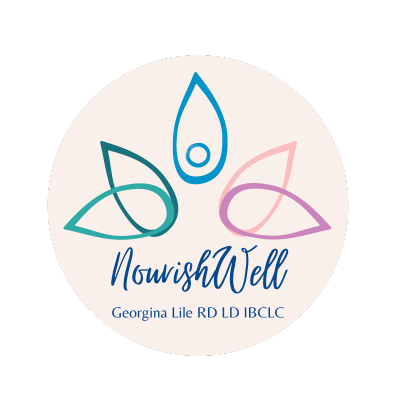Colostrum is Supermilk!
You know how some foods that are high in nutrients and anti-oxidants are called “superfoods”? Colostrum is the superfood of milks. It is indeed MILK. Contrary to what we hear from others about “milk coming in”, we produce milk from day one and it is a supermilk, also known as colostrum. Colostrum is our first milk and it is rich in protein, antibodies, antioxidants and growth factors.
Colostrum production begins in the second trimester of pregnancy. Some moms may leak small amounts of colostrum during pregnancy, but most do not. It ranges from clear to yellow in color. It is thick and gel-like and we produce it in small amounts. The consistency and amount is perfect for a newborn learning how to coordinate a suck, swallow, breathe pattern. It just the right amount to fill your newborn baby’s tiny tummy which comfortably holds about 7 milliliters on day one. It will gradually increase along with the size of your baby’s tummy over the next week. We often hear that a newborn needs 8-12 feedings in 24 hours, but in the first few days this can be more like 12-15 feedings. Small, very frequent feedings are normal and expected in the first week. Frequent feedings will keep your baby’s tummy full and will help build a bigger milk supply.
Colostrum is an immunity powerhouse! The newborn gut lining is immature and has tiny junctions or openings between the cells. It is waiting for colostrum to come in and seal these openings so that pathogens cannot cross into the baby’s bloodstream and make them sick. It primes the gut with healthy bacteria which we now know is important for lifelong gut health. It is rich in immunoglobulins that protect babies from infections. It also acts as a laxative to help baby pass meconium.
Between days 2-3, colostrum normally begins the transition to higher volume, higher lactose and higher fat milk. The beta carotene that turns colostrum yellow decreases and calcium that turns it white increases along with a shift in many other nutrients. Some conditions and delivery factors are associated with a delay of this transition by a few days. The best way to speed this transition is to feed baby very frequently and practice lots of skin-to skin between feedings. Alternatively, remove colostrum frequently with hand expression or a pump if baby cannot nurse often.
Colostrum is the biological norm for newborn guts. It is important and has unique functions in helping babies’ gut and immune system to mature very quickly. It comes in just the right amount for your baby’s tummy and is all that your baby needs. Feed your baby as often as they show cues. If your baby is jaundiced or pre-term you may have to wake baby often to feed. Watch for appropriate wet and dirty diapers to know if baby is getting enough. If in doubt, ask to speak with your hospital lactation consultant.
GEORGINA LILE IS AN IN-NETWORK PROVIDER FOR AETNA
Many Aetna plans cover up to 6 visits with a lactation consultant if you need support with breastfeeding or a prenatal breastfeeding class; with no out-of-pocket cost to you.
During the Covid-19 pandemic, Aetna is covering virtual lactation care from an in-network provider like myself at no cost to you.
She also accepts some Blue Cross Blue Shield, Cigna and United Plans through Lactation Network. Coverage varies.
